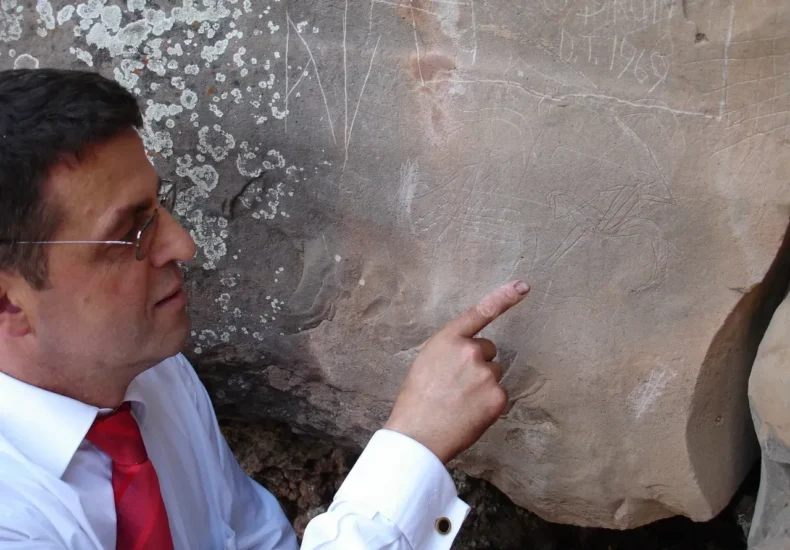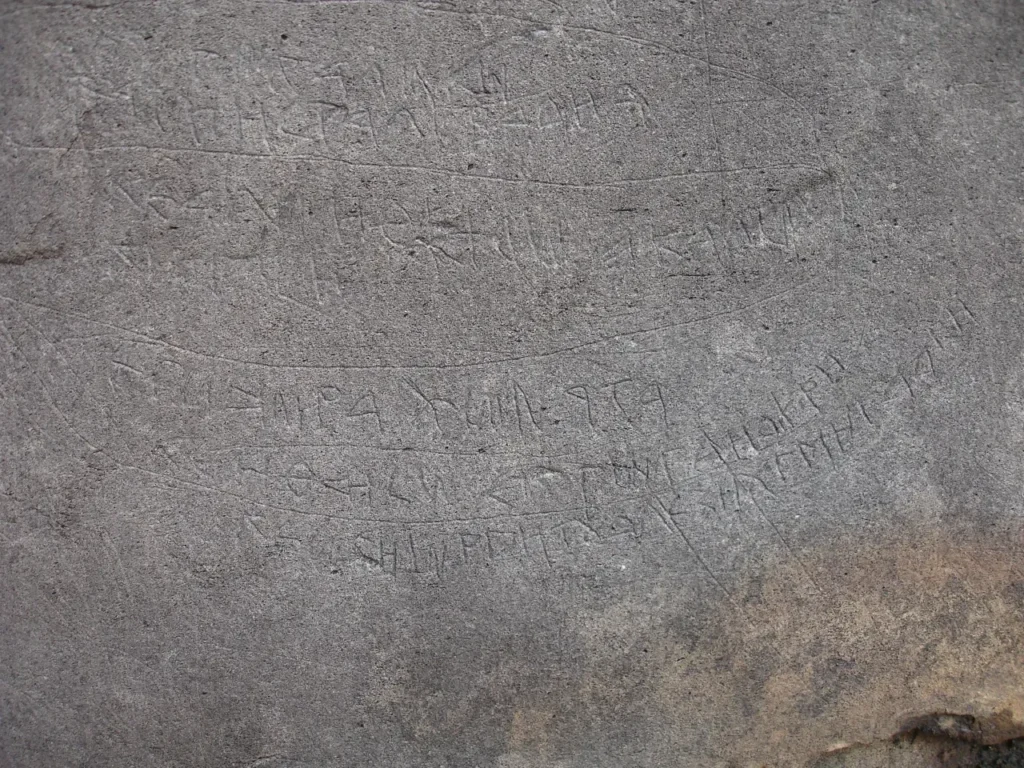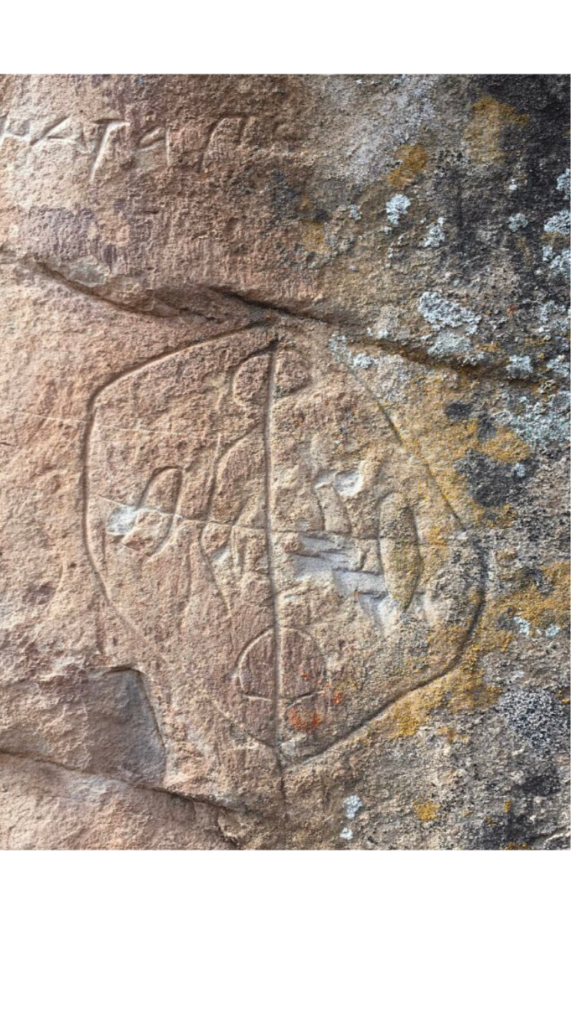
Esatlı Rock Inscriptions Reveal That Turkish Migrations to Anatolia Occurred Earlier Than Previously Thought
Turkish tribes initiated a westward migration wave from the lands known as Central Asia. The Turkish people who migrated westward in two major branches reached Anatolia in one branch, while the other branch moved towards Europe through the Russian steppes.
According to official history, the Turks’ adoption of Anatolia as their homeland began with the Battle of Manzikert against the Byzantines in 1071. However, the work of some archaeologists and historians suggests that the beginning of Anatolia’s settlement dates back much earlier.
One of the discoveries that pushes this timeline further back is the Esatlı Rock Inscriptions located in Ordu, a city in Türkiye’s Eastern Black Sea Region. The Esatlı Rock Inscriptions were discovered during surface surveys conducted by Prof. Dr. Necati Demir, a faculty member at Gazi University, in the 1990s.
Regarding the Esatlı Rock Inscriptions, which contain information that will deeply affect Turkish history, Prof. Dr. Necati Demir provided the following information to the Ordu Olay newspaper:

“The Esatlı Rock Inscriptions are not only an important cultural heritage found in Mesudiye but also a very important part of Turkish history. These inscriptions are one of the areas with the most Göktürk script after the Göktürk inscriptions. The region has left very deep traces in the historical context. Especially the pictures and writings in the inscriptions provide very valuable information about prehistoric Turkish migrations. These inscriptions show how far back the historical origins and cultures of the Turks go.
In the 1990s, I started conducting a field survey in all the villages of Ordu to identify the region’s cultural heritage. During this process, I came across important findings such as the Esatlı Rock Inscriptions. The inscriptions consist not only of written expressions but also rock paintings. They are very similar to the rock inscriptions in Kyrgyzstan. This is another factor that increases the historical importance of the inscriptions. These inscriptions, which show how old the Turkish migrations from Central Asia to Anatolia are, shed light on Anatolia’s history.
This alphabet is the Göktürk Alphabet. However, it is the handwriting form of the Göktürk Alphabet. I deciphered and read the writing here. It is the same alphabet as the Göktürk alphabet. However, it is the handwriting form… These inscriptions have a similar structure to the writings on the ceiling of Trabzon Hagia Sophia Church. The deciphering of these inscriptions provides not only information about Turkish history but also important data from a linguistic point of view. However, unfortunately, the deciphering process is further complicated due to the damage to the inscriptions.

Prof. Dr. Demir: Urgent measures need to be taken to protect these inscriptions.
A large part of the inscriptions has been damaged and erased over time. I applied to the authorities for the region to be declared a protected area, but no concrete steps have been taken. More resources should be allocated to protect our cultural heritage, and coordination should be ensured among the relevant authorities. Additionally, the Esatlı Rock Inscriptions need to be protected and promoted not only locally but also internationally. UNESCO’s support is very important in this regard.

We need to make serious efforts to include the Esatlı Rock Inscriptions in the UNESCO World Heritage List. However, Türkiye does not have sufficient technological capabilities and scientific infrastructure in this field. I also published an article in a scientific journal in Germany for these inscriptions to be included in international literature. However, no concrete steps have been taken yet. If we do not act quickly, there will be a great loss. A great loss for Turkish history. Other countries, such as Iran, claim and protect such inscriptions.
Treasure hunters have already dug and damaged them. If excavations are carried out in Esatlı, perhaps periodic findings can be found. For example, if bone or animal remains are found, carbon-14 tests can be performed on these findings. Carbon-14 testing is now very advanced. Then it will be possible to know the exact date of the inscriptions. We think that the inscriptions belong to the second century AD. However, excavations must be carried out very carefully so as not to damage the protection of the inscriptions.”
You may also like
- A 1700-year-old statue of Pan unearthed during the excavations at Polyeuktos in İstanbul
- The granary was found in the ancient city of Sebaste, founded by the first Roman emperor Augustus
- Donalar Kale Kapı Rock Tomb or Donalar Rock Tomb
- Theater emerges as works continue in ancient city of Perinthos
- Urartian King Argishti’s bronze shield revealed the name of an unknown country
- The religious center of Lycia, the ancient city of Letoon
- Who were the Luwians?
- A new study brings a fresh perspective on the Anatolian origin of the Indo-European languages
- Perhaps the oldest thermal treatment center in the world, which has been in continuous use for 2000 years -Basilica Therma Roman Bath or King’s Daughter-
- The largest synagogue of the ancient world, located in the ancient city of Sardis, is being restored











Leave a Reply